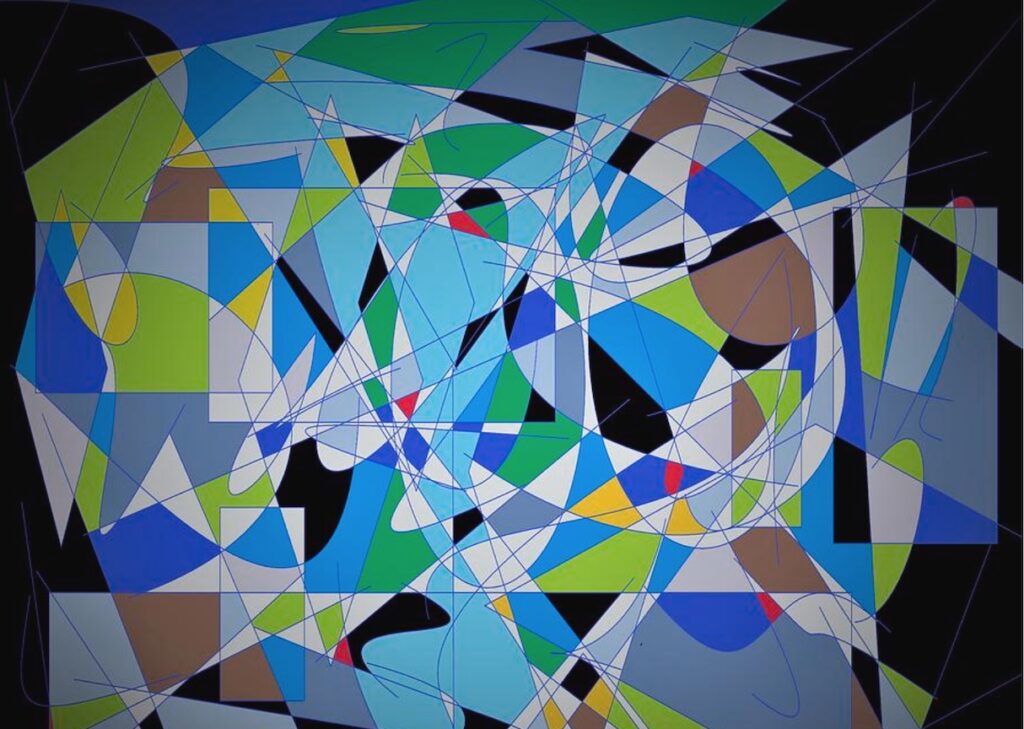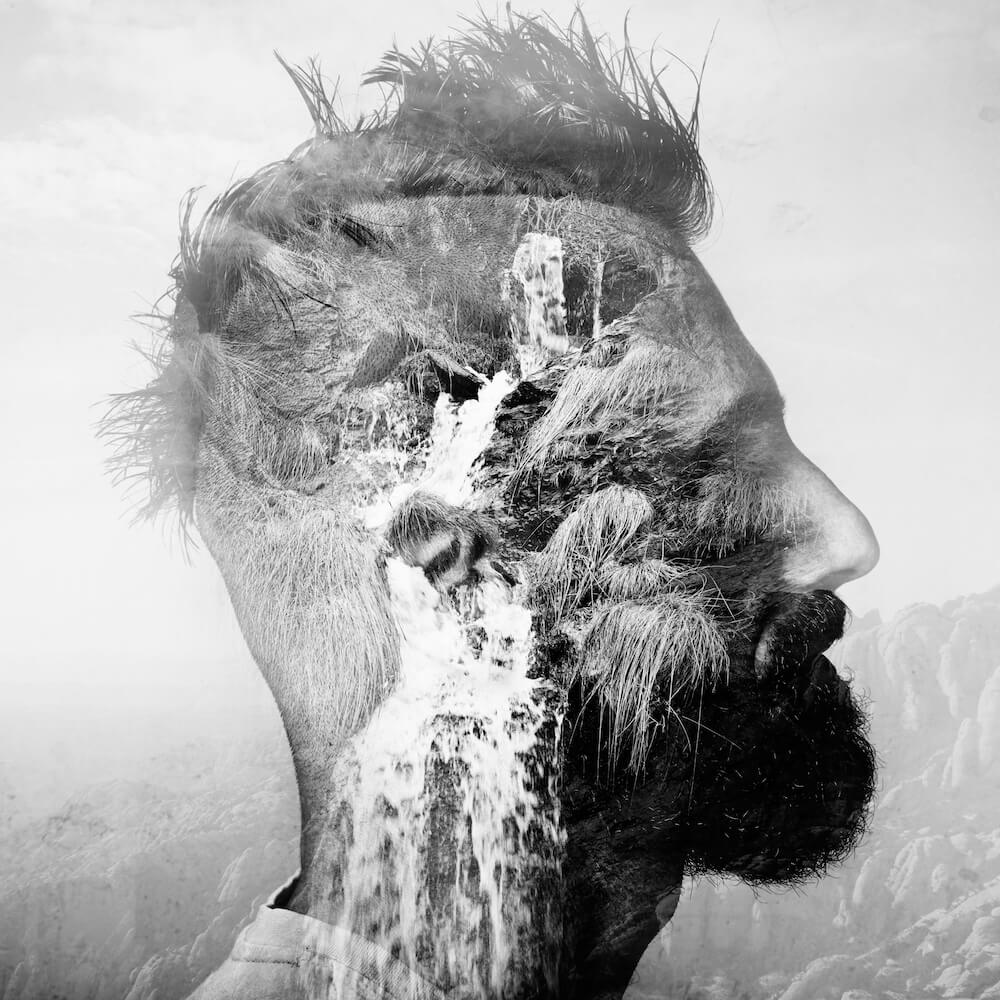
My Shattered World by Mesa Teresita
Shattered science,
Shattered morality,
Shattered ego,
Shattered hopes,
Shattered world.
The world nowadays feels so fragmented, so shattered, it makes me reach for remedies in ancient wisdom. Today, I’m searching for answers in functional cosmologies, such as creation myths, which try to capture the enormity and essence of this discomfort. It is impossible to describe the world simply as something scientifically observed or something spiritually experienced because at some level it is both and more. Joseph Campbell, known for his work on comparative mythology and religion, said that his favorite definition of religion was a misinterpretation of mythology. The misinterpretation results from attributing historical substance to symbols that are spiritual in their reference. Thus, the personal, internal effort an individual makes to get in touch with matters related to an ultimate reality becomes spirituality, while religion reflects the external efforts made by the groups and communities of individuals trying to get in touch with such matters. One myth that seems peculiarly relevant to my theme is the Jewish Kabbalah story of creation.
The rabbi and Kabbalist Isaac Luria (1534–1572) developed this form of Jewish mysticism most rigorously in the sixteenth century. The reason the Kabbalah creation myth seems most helpful is that it extends and binds the search for conceptual truth with the search for the nonconceptual aspects of being. Another way of saying this is that the unity, differentiation, and integration aspects of the myth express first principles of creation that can guide my actions. First principles, such as Isaac Newton’s laws of motion, give foundational premises to the structuring of reality. This Kabbalah story suggests that the reason nature reflects such foundational principles is that they are fundamental, non-reducible, complementary, and necessary in how we came to be. Similar to models in physics, biology, and medicine, mythologies act as patterns of the human experience that help highlight these principles.
The beginning of the Torah’s Hebrew text is the phrase B’reshit Bara Elohim. Thishas multiple interpretations. In contrast to the traditional interpretation of “In the beginning, God created…” the alternative interpretations are: “In (a) beginning created God” or “In (a) beginning of created God.” Both alternative interpretations contradict tradition and reality, for they imply either multiple creations of the universe or that God had a beginning. Such disagreements in the literal interpretation of the Torah have produced varied approaches in Rabbinic Judaism and in interpreting text in the study of the Torah.
Isaac Luria taught that in the beginning, God created the universe by a self-exile movement called Tzimtzum. In Hebrew, Tzimtzum means a stepping back to allow for the existence of an Other, as in something or someone else. Thus, God began creation by contracting his infinite light and this contraction occurred to allow for a conceptual space in which finite and independent realms could exist. God withdraws into self-exile to make space for the universe.
Kabbalah teaches that the Light of God always existed but needed to share, so it created an Other. The Light of God shared while the Other received – a perfect symbiotic relationship. But the Other, created in the image of its creator, also desired to share. To allow it the ability to share, the Light of God condensed further into a point of infinite density and infinite energy. In a great cosmic flash, this contraction exploded in every direction, presumably marking what we know as the cosmic Big Bang.
When the Light of God contracted it created the universe or Adam Kadmon, according to Kabbalah, and allowed life as we know it. The Big Bang not only created space, but allowed darkness and evil to become possible. In order for a finite world to exist, God’s light had to undergo several stages of refinement. In one of these stages, the light manifested as multiple individual qualities called Sefirot or attributes. These attributes acted as separate, independent points of light, or quanta of energy and composed the world of Tohu (chaos or disorder—which were the original conditions of the universe). Because of the intensity and exclusivity of the light and the inability of these vessels to contain it, the Sefirot of Tohu shattered. The fragments of the vessels then fell and became absorbed into the various worlds below the world of chaos. This breaking of the vessels, fragmentation, or differentiation became known as the Shevirah.
The order of creation that follows the disintegration of the world of Tohu or chaos is the world of Tikun (literally translated as rectification or restoration). During this period, God puts His light into new containers of light, animate beings, because these can do something that inanimate vessels cannot, and that is to work together interdependently, harmoniously, and thus contain and mirror the light back. These animate beings of light, or Partzufim (metaphorical figure of human likeness), work as symbiotic systems instead of the discrete, independent ones existing in the chaotic Tohu. Hence, God’s people, the Jews, appear in this evolution to repair the original shattered vessels by re-collecting the sparks of Light in the world that became trapped in layers of darkness. Tikkun olam is this re-collection, repairing, and reintegration of the fragmented world.
This Kabbalah myth, based on an alternative interpretation of the story of creation, comprises at least three fundamental phases. The first is God’s contraction, or self-imposed, self-limiting impulse called Tzimtzum, which allows for a differentiation of the Light to occur. During the Shevirah, a shattering of the inanimate vessels containing the Light into zillions and zillions of pieces occurs and a further differentiation of the Light that leads to the creation of the universe. The last phase is the appearance of animate beings for the re-collecting and repairing of the shattering, a reintegration called Tikkun olam. In sum, the original unity produces differentiation through a great explosion of being, only to be followed by reintegration and reunification of that unity. Whether this occurred once or is a great cycle depends on interpreting the phrase B’reshit Bara Elohim.
There is, at least for me, something hopeful, aspirational, mysterious, and beautiful in this ancient story. In it, humans practice a spiritual form of kintsugi, the captivating Japanese art of putting broken pottery pieces back together with gold — a metaphor for embracing our flaws and imperfections. By doing so, we recreate something wonderful, ancient, and healing.
MAY WE ALL BE HEALED!

